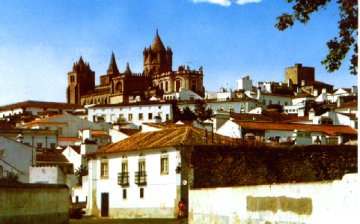
| Evora is one of those beautiful old towns that we really loved visiting. Staying in town at the Pousada Dos Loios, we were within easy walking distance of nearly everything in town from the Temple of Diana to the many churches we enjoyed visiting to the town square. |  |
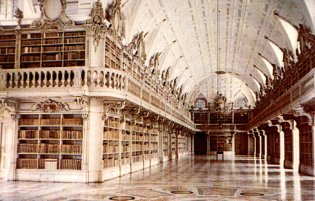 |
The National Palace of Mafra holds one of the largest libraries in Europe of ancient books. Wall after wall, rack after rack, there are 40,000 books available for research and study with many books 200-300 years old. Also just outside of Lisbon was built in 1717 and is a Baroque work of art. It took 13 years and 50,000 workers to build this magnificent palace of 880 rooms housed 300 Friars at one time. |
| Mafra is a beautiful palace but in need of major repair and renovation which fortunately is starting to take place. The day we came here, it was raining cats and dogs and the place leaked like a sieve. We turned one corner to be shocked by the fact that water was running down one wall over an old map from the 1600s. This is a view of the interior of the Basilica's main chapel. Built by King Jaoa V after the intervention of the Franciscan's prayers in helping him conceive a son. It was the summer residence of the kings of Portugal. | 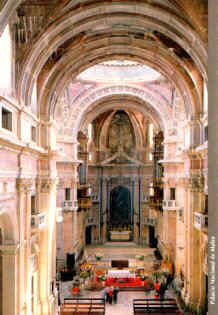 |
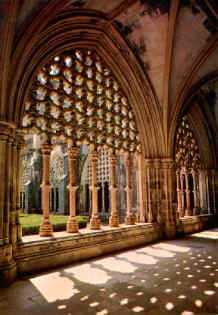 |
73 Miles north of Lisbon is the Monestary in Batalha, Santa Maria da Vitoria. In 1385, Joa I vowed on the plains of Aljubarrota that if his outnumbered army defeated the Castillians (of Spain), he would build this monastery to the Virgin Mary. Designed the the Manueline style (note the stone lattice work that looks like ropes) there are still seven unfinished chapels in the monastery becaused the workers were called off to work on another monastery in Belem. |
| Also included in the Monastery at Batalha is this huge central nave. Sitting in the wood pews, you feel incredibly small compared to the grandure around you. | 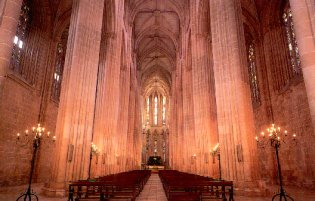
|
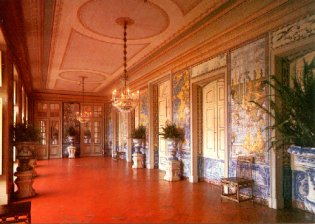 |
The National Palace of Queluz is a considered Portugal's Versailles. Although on a smaller scale, the palace is no less grand. Much of it was built on Rocco style, quite flamboyant but beautiful in its appearance. This is the tile room. Marble is from the same Florentine quarries that were used by Michelangelo. You will also see Flemish tapestries and empire antiques, Austrian porcelain, and Delft Indigo blue ceramics. |
| This is the bedroom where Dom Pedro was born and who returned from Brazil to die in the same bed. It was he who declared Brazil's independance from Portugal in 1822. It is called the Don Quixote room. | 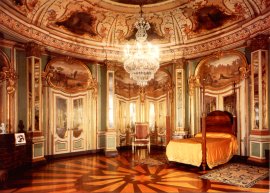 |
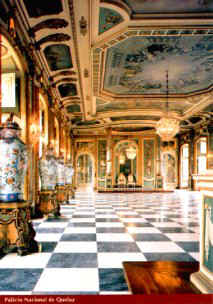 |
The National Palace at Queluz was built under the orders of Pedro III from 1747 to 1787 and has suffered greatly at the hands of the French. In fact, at one time, things were so desperate that the contents were shipped off, along with the Royal family, to Brazil. In 1934 it suffered also from an extensive fire but has been rebuilt in the style of the 18th century. This is the Ambassador's Room. |